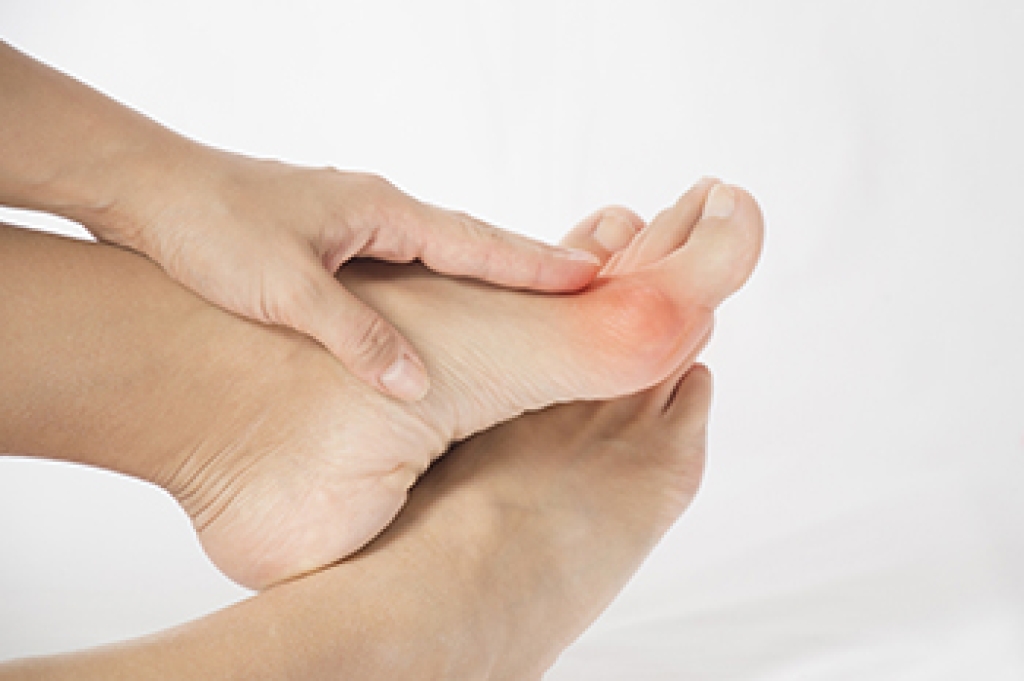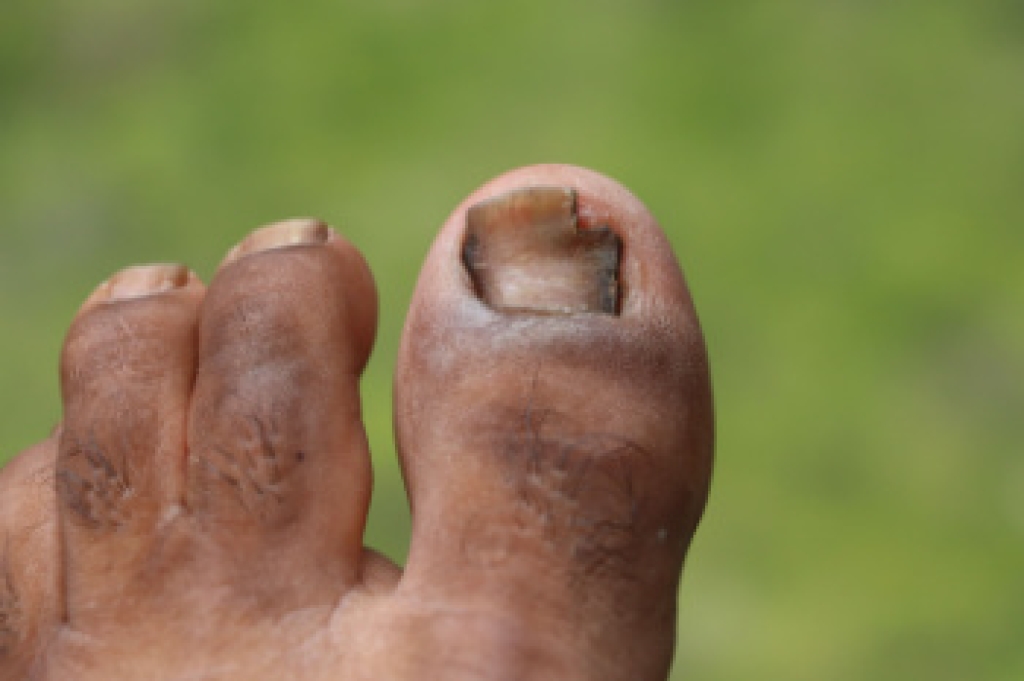Blog
Signs and Causes of Ankle Sprains

An ankle sprain occurs when the ligaments that stabilize the ankle stretch or tear, often following a twist, fall, or sudden blow to the joint. Ligaments connect bones together, and, when damaged, they can cause significant pain and limit mobility. Signs of an ankle sprain include swelling, bruising, sudden sharp pain, difficulty bearing weight, and, in severe cases, a popping sound at the time of injury. Some sprains may make the ankle feel unstable or cause it to give out while walking. Sprains range in severity from mild stretching of ligaments to complete tears, and symptoms may resemble those of a fracture, making diagnosis by a podiatrist important. Repeated sprains are more likely if the first injury does not heal properly. A podiatrist can perform an exam, order imaging if needed, and recommend proper treatment. If you have symptoms of an ankle sprain, it is suggested that you schedule an appointment with a podiatrist.
Ankle sprains are common but need immediate attention. If you need your feet checked, contact one of our podiatrists from Graff Foot, Ankle and Wound Care. Our doctors can provide the care you need to keep you pain-free and on your feet.
How Does an Ankle Sprain Occur?
Ankle sprains take place when the ligaments in your ankle are torn or stretched beyond their limits. There are multiple ways that the ankle can become injured, including twisting or rolling over onto your ankle, putting undue stress on it, or causing trauma to the ankle itself.
What Are the Symptoms?
- Mild to moderate bruising
- Limited mobility
- Swelling
- Discoloration of the skin (depending on severity)
Preventing a Sprain
- Wearing appropriate shoes for the occasion
- Stretching before exercises and sports
- Knowing your limits
Treatment of a Sprain
Treatment of a sprain depends on the severity. Many times, people are told to rest and remain off their feet completely, while others are given an air cast. If the sprain is very severe, surgery may be required.
If you have suffered an ankle sprain previously, you may want to consider additional support such as a brace and regular exercises to strengthen the ankle.
If you have any questions please feel free to contact our offices located in Plano, Dallas, Prosper, Allen, Garland, Frisco, and Coppell, TX . We offer the newest diagnostic tools and technology to treat your foot and ankle needs.
The Hidden Cause Behind Crooked or Painful Toes

When your toes start to curl downward instead of lying flat, it may signal more than a minor irritation. Conditions such as hammertoe, mallet toe, and claw toe develop when imbalances in the muscles and tendons cause the toe joints to bend in unnatural ways. Hammertoe typically affects the middle joint, mallet toe the tip, and claw toe causes all joints to curl, often digging into the sole of the foot. These deformities can begin as mild stiffness or shoe discomfort, but may progress to painful, rigid joints if untreated. Wearing tight footwear, past injuries, or inherited foot shapes often contribute. A podiatrist can recommend wider shoes, stretching, pads, or custom orthotics to reduce pressure and improve alignment. For more advanced cases, minor surgery may be needed to straighten the toes. Early treatment keeps your steps comfortable and your toes flexible. It is suggested that you pay attention to early signs of crooked toes, and if problems arise, seek treatment from a podiatrist.
Hammertoe
Hammertoes can be a painful condition to live with. For more information, contact one of our podiatrists from Graff Foot, Ankle and Wound Care. Our doctors will answer any of your foot- and ankle-related questions.
Hammertoe is a foot deformity that affects the joints of the second, third, fourth, or fifth toes of your feet. It is a painful foot condition in which these toes curl and arch up, which can often lead to pain when wearing footwear.
Symptoms
- Pain in the affected toes
- Development of corns or calluses due to friction
- Inflammation
- Redness
- Contracture of the toes
Causes
Genetics – People who are genetically predisposed to hammertoe are often more susceptible
Arthritis – Because arthritis affects the joints in your toes, further deformities stemming from arthritis can occur
Trauma – Direct trauma to the toes could potentially lead to hammertoe
Ill-fitting shoes – Undue pressure on the front of the toes from ill-fitting shoes can potentially lead to the development of hammertoe
Treatment
Orthotics – Custom made inserts can be used to help relieve pressure placed on the toes and therefore relieve some of the pain associated with it
Medications – Oral medications such as anti-inflammatories or NSAIDs could be used to treat the pain and inflammation hammertoes causes. Injections of corticosteroids are also sometimes used
Surgery – In more severe cases where the hammertoes have become more rigid, foot surgery is a potential option
If you have any questions, please feel free to contact our offices located in Plano, Dallas, Prosper, Allen, Garland, Frisco, and Coppell, TX . We offer the newest diagnostic and treatment technologies for all your foot care needs.
Bunions Are More Than a Bump on the Foot

Bunions are a common foot deformity that develop when the tip of the big toe shifts toward the second toe, causing a bony bump to form on the side of the foot. This misalignment can be caused by inherited foot structure, wearing tight or narrow shoes, arthritis, or repeated stress on the joint. Symptoms often include pain, swelling, redness, and difficulty wearing shoes. The area may feel sore to the touch and can become more painful with walking or standing for long periods. Over time, bunions may worsen and affect mobility. A podiatrist can diagnose a bunion through a physical examination and X-rays to assess the severity. Treatment options include footwear changes, custom orthotics, padding, and anti-inflammatory medications. In more severe cases, surgical correction may be necessary to realign the joint. Early intervention can relieve discomfort and prevent progression. To explore effective solutions for bunion pain and deformity, it is suggested that you make an appointment with a podiatrist.
If you are suffering from bunion pain, contact one of our podiatrists of Graff Foot, Ankle and Wound Care. Our doctors can provide the care you need to keep you pain-free and on your feet.
What Is a Bunion?
Bunions are painful bony bumps that usually develop on the inside of the foot at the joint of the big toe. As the deformity increases over time, it may become painful to walk and wear shoes. Women are more likely to exacerbate existing bunions since they often wear tight, narrow shoes that shift their toes together. Bunion pain can be relieved by wearing wider shoes with enough room for the toes.
Causes
- Genetics – some people inherit feet that are more prone to bunion development
- Inflammatory Conditions - rheumatoid arthritis and polio may cause bunion development
Symptoms
- Redness and inflammation
- Pain and tenderness
- Callus or corns on the bump
- Restricted motion in the big toe
In order to diagnose your bunion, your podiatrist may ask about your medical history, symptoms, and general health. Your doctor might also order an x-ray to take a closer look at your feet. Nonsurgical treatment options include orthotics, padding, icing, changes in footwear, and medication. If nonsurgical treatments don’t alleviate your bunion pain, surgery may be necessary.
If you have any questions, please feel free to contact our offices located in Plano, Dallas, Prosper, Allen, Garland, Frisco, and Coppell, TX . We offer the newest diagnostic and treatment technologies for all your foot care needs.
Understanding Onychomycosis and Nail Health

Onychomycosis is a fungal infection of the toenails that can cause thickening, discoloration, and brittleness. The nail may turn yellow, white, or brown and gradually separate from the nail bed. While often painless in the beginning, the infection can become uncomfortable and unsightly over time, making it difficult to trim nails or wear shoes. Warm, moist environments inside footwear provide the perfect setting for fungal growth, and risk increases with age, diabetes, or weakened circulation. Because the infection rarely clears on its own, treatment is usually necessary. Options may include topical or oral antifungal medication, laser therapy, or, in some cases, removal of the affected nail. Keeping feet clean and dry, trimming nails properly, and wearing breathable shoes can reduce the chance of recurrence. If you are dealing with changes to your toenails that may signal fungus, it is suggested that you consult a podiatrist for evaluation and appropriate care.
If left untreated, toenail fungus may spread to other toenails, skin, or even fingernails. If you suspect you have toenail fungus it is important to seek treatment right away. For more information about treatment, contact one of our podiatrists of Graff Foot, Ankle and Wound Care. Our doctors can provide the care you need to keep you pain-free and on your feet.
Symptoms
- Warped or oddly shaped nails
- Yellowish nails
- Loose/separated nail
- Buildup of bits and pieces of nail fragments under the nail
- Brittle, broken, thickened nail
Treatment
If self-care strategies and over-the-counter medications does not help your fungus, your podiatrist may give you a prescription drug instead. Even if you find relief from your toenail fungus symptoms, you may experience a repeat infection in the future.
Prevention
In order to prevent getting toenail fungus in the future, you should always make sure to wash your feet with soap and water. After washing, it is important to dry your feet thoroughly especially in between the toes. When trimming your toenails, be sure to trim straight across instead of in a rounded shape. It is crucial not to cover up discolored nails with nail polish because that will prevent your nail from being able to “breathe”.
In some cases, surgical procedure may be needed to remove the toenail fungus. Consult with your podiatrist about the best treatment options for your case of toenail fungus.
If you have any questions please contact our offices located in Plano, Dallas, Prosper, Allen, Garland, Frisco, and Coppell, TX . We offer the newest diagnostic and treatment technologies for all your foot and ankle needs.

